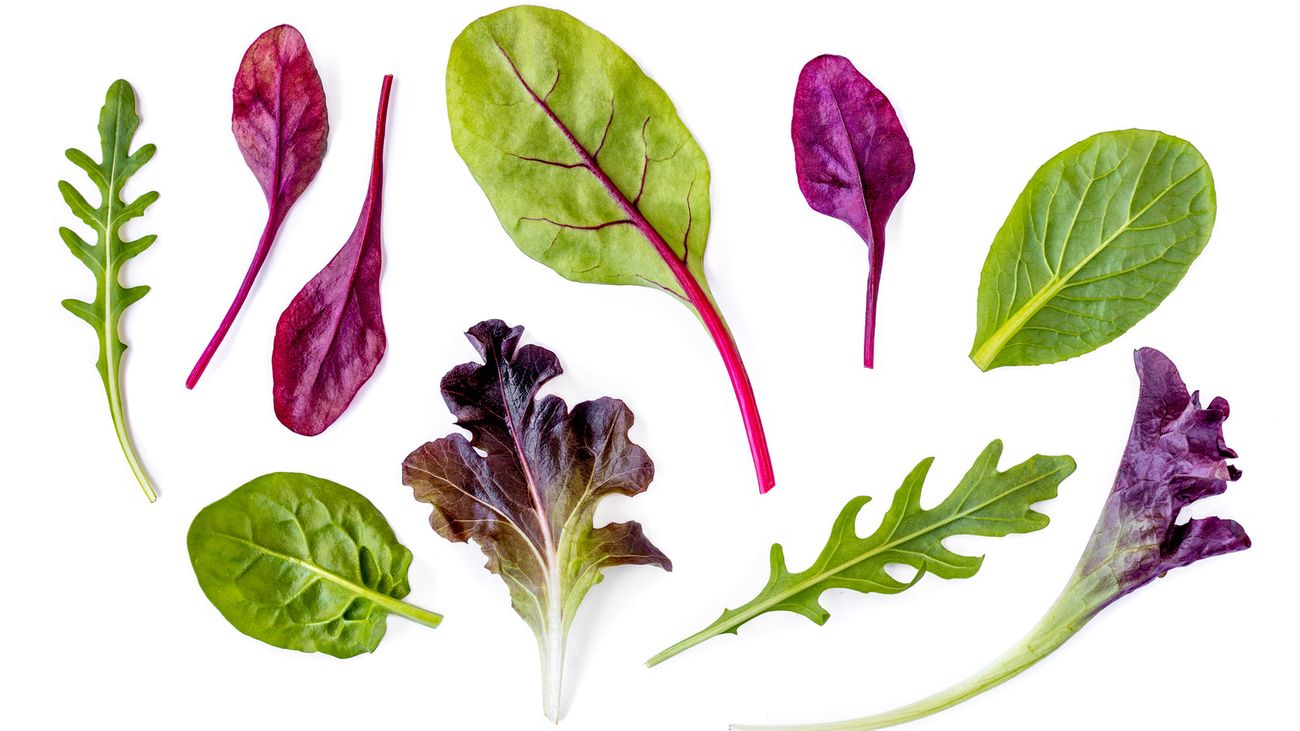
Purple lettuce might seem like a quirky addition to your salad, but it's packed with benefits and interesting facts. Did you know purple lettuce gets its vibrant color from anthocyanins, which are powerful antioxidants? These antioxidants help fight off free radicals in your body. Not only is it visually appealing, but it also offers a slightly different taste compared to green lettuce—often described as a bit more earthy or robust. Purple lettuce is also rich in vitamins A and C, making it a nutritious choice. Whether you’re a salad enthusiast or just curious about this colorful veggie, there’s more to purple lettuce than meets the eye. Dive into these 20 facts to learn why this leafy green deserves a spot on your plate.
Key Takeaways:
- Purple lettuce is a colorful and nutritious leafy green packed with antioxidants and vitamins. It's low in calories, high in water content, and supports immunity, eye health, and digestion.
- Purple lettuce is not only healthy but also versatile in the kitchen. It can be used in salads, wraps, as a garnish, in smoothies, and even juiced. Growing it is easy, and it thrives in cooler temperatures with proper sunlight and watering.
What is Purple Lettuce?
Purple lettuce, also known as red lettuce, is a vibrant and nutritious leafy green. Its striking color and unique taste make it a favorite in salads and other dishes. Here are some intriguing facts about this colorful vegetable.
-
Rich in Antioxidants: Purple lettuce gets its color from anthocyanins, powerful antioxidants that help fight free radicals in the body.
-
Varieties: There are several types of purple lettuce, including Lollo Rosso, Red Romaine, and Red Leaf.
-
Nutrient-Dense: This lettuce is packed with vitamins A, C, and K, as well as folate and iron.
-
Low in Calories: With only about 15 calories per 100 grams, it's a great choice for those watching their weight.
-
Hydration: Composed of over 90% water, purple lettuce helps keep you hydrated.
Health Benefits of Purple Lettuce
Eating purple lettuce can provide numerous health benefits. Its nutrient profile supports various bodily functions and overall well-being.
-
Boosts Immunity: The high vitamin C content strengthens the immune system.
-
Promotes Eye Health: Vitamin A in purple lettuce is essential for good vision.
-
Supports Bone Health: Vitamin K is crucial for bone health and helps in blood clotting.
-
Aids Digestion: The fiber in purple lettuce promotes healthy digestion and regular bowel movements.
-
Anti-Inflammatory Properties: Anthocyanins have anti-inflammatory effects, which can help reduce inflammation in the body.
Culinary Uses of Purple Lettuce
Purple lettuce isn't just nutritious; it's also versatile in the kitchen. Its unique flavor and texture can enhance many dishes.
-
Salads: Its crisp texture and slightly bitter taste make it a perfect addition to salads.
-
Wraps: Use large leaves as a healthy alternative to tortillas or bread for wraps.
-
Garnish: Add a pop of color to your dishes by using purple lettuce as a garnish.
-
Smoothies: Blend it into smoothies for an extra nutrient boost.
-
Juicing: Purple lettuce can be juiced along with other vegetables for a refreshing drink.
Growing Purple Lettuce
Growing your own purple lettuce can be a rewarding experience. It's relatively easy to cultivate and can be grown in various climates.
-
Cool-Season Crop: Purple lettuce thrives in cooler temperatures, making it ideal for spring and fall planting.
-
Sunlight: It requires full sun to partial shade for optimal growth.
-
Soil: Prefers well-drained, fertile soil rich in organic matter.
-
Watering: Keep the soil consistently moist but not waterlogged.
-
Harvesting: Harvest leaves as needed, or cut the entire plant when it reaches maturity for a continuous supply.
The Final Bite on Purple Lettuce
Purple lettuce isn't just a pretty face in your salad bowl. Packed with antioxidants, it helps fight off free radicals and keeps your body healthy. Its vibrant color comes from anthocyanins, which are also found in blueberries and red cabbage. This leafy green is low in calories but high in vitamins A and C, making it a great addition to any diet. Plus, it's versatile—perfect for salads, wraps, or even as a garnish.
Next time you're at the grocery store, consider grabbing some purple lettuce. Not only will it add a pop of color to your meals, but it also brings a host of health benefits. Eating healthy doesn't have to be boring, and purple lettuce proves that. So, give it a try and see how it can brighten up your plate and boost your nutrition.
Frequently Asked Questions
Was this page helpful?
Our commitment to delivering trustworthy and engaging content is at the heart of what we do. Each fact on our site is contributed by real users like you, bringing a wealth of diverse insights and information. To ensure the highest standards of accuracy and reliability, our dedicated editors meticulously review each submission. This process guarantees that the facts we share are not only fascinating but also credible. Trust in our commitment to quality and authenticity as you explore and learn with us.


